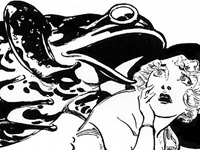Go West, Young Woman!
It’s Women’s History Month, a good time to remember that women, as well as men, settled the West—and recorded their experiences. Answer the following questions on excerpts from the records of 19th-century (and one early 20th-century) women.
1. It was after dark when we came in sight of the camp and a dismal looking it is the tents are all huddled in together and the wagons are interspersed some are singing and laughing some are praying children crying &c. every sound may be heard from one tent to another . . .
This entry comes from a diary recording one woman's experience on:
c. The Mormon Trail
 In her diary, 18-year-old Emmeline B. Wells describes her experiences on the trail from Nauvoo, IL, to Garden Grove, IA. In 1846, Mormons, followers of the Church of Latter-day Saints, began to migrate west from their settlement in Nauvoo due to persecution, following a trail that, for much of its length, closely followed the Oregon Trail. Wells's diary describes the first half of this journey; as 1846 ended, the Mormons would winter in Iowa and then continue on to the territory that would become Utah. Wells relates experiences both general to all trailgoers and specific to women—the diary ends with her husband unexpectedly abandoning her, and her grief at the event.
In her diary, 18-year-old Emmeline B. Wells describes her experiences on the trail from Nauvoo, IL, to Garden Grove, IA. In 1846, Mormons, followers of the Church of Latter-day Saints, began to migrate west from their settlement in Nauvoo due to persecution, following a trail that, for much of its length, closely followed the Oregon Trail. Wells's diary describes the first half of this journey; as 1846 ended, the Mormons would winter in Iowa and then continue on to the territory that would become Utah. Wells relates experiences both general to all trailgoers and specific to women—the diary ends with her husband unexpectedly abandoning her, and her grief at the event.
2. There were no battlefields, but over every mile of the long trail stalked the shadow of death. And what was waiting to greet us in [. . .]? A wilderness marked by faint trails of wild Indian feet (wilder than wild animals that would tear with bloody claws) and slow, agonizing death caused by the poison fangs of rattlesnakes who were in countless numbers.
This paragraph from a memoir by a female pioneer describes which state?
b. California
 Lee Summers Whipple-Haslam, near the end of her life, wrote a memoir of her experiences as a child traveling to and living in California during the Gold Rush. Whipple-Haslam's parents brought her to California in 1850, where her mother ran a boarding house and her father prospected. Critics accused the memoir, published in 1925, of being more nostalgic fantasy than precise memory, but it still provides one woman's latter-life interpretation of the Gold Rush and California settlement.
Lee Summers Whipple-Haslam, near the end of her life, wrote a memoir of her experiences as a child traveling to and living in California during the Gold Rush. Whipple-Haslam's parents brought her to California in 1850, where her mother ran a boarding house and her father prospected. Critics accused the memoir, published in 1925, of being more nostalgic fantasy than precise memory, but it still provides one woman's latter-life interpretation of the Gold Rush and California settlement.
3. We all take names - Wajapa names me, Ma-she-ha-the. It means, The motion of eagle as he sweeps high in the air. He gives me the name of his family and band. He belongs to the eagle family. Ma-she means high, ha-the means eagle.
In this diary extract, a woman is describing an encounter with which Native American group?
a. The Dakota Sioux
 In this excerpt from her September 23, 1881 diary entry, ethnologist Alice Fletcher describes her assumption of a Sioux Dakota name before spending a month and a half studying the lives of Native Americans in the Dakota Territory. Fletcher, a woman from a well-off family, had developed a vocational interest in ethnology that led her to undertake this study. Like many other male and female reformers of the day, she would go on to attempt to "civilize" Native American culture through education and political action.
In this excerpt from her September 23, 1881 diary entry, ethnologist Alice Fletcher describes her assumption of a Sioux Dakota name before spending a month and a half studying the lives of Native Americans in the Dakota Territory. Fletcher, a woman from a well-off family, had developed a vocational interest in ethnology that led her to undertake this study. Like many other male and female reformers of the day, she would go on to attempt to "civilize" Native American culture through education and political action.
4.

In this image, a female photographer captures a scene in what city?
b. San Francisco
Words aren't the only medium in which women could capture their life experiences in the West. Here, photographer Laura Adams Armer records a street scene from San Francisco, c. 1910. Armer worked as a portrait photographer in San Francisco in the early 1900s, taking time to preserve not only portraits of native San Franciscans but also photographs of the life of the city—and, later in her career, of the lives of southwestern Native Americans, particularly Navajo communities.
 Read the full text of Emmeline B. Wells's diary at the Library of Congress's American Memory collection Trails to Utah and the Pacific: Diaries and Letters, 1846-1849. The collection includes diaries written by three other women traveling the westward trails; refer to the author index and introductory essay for more information.
Read the full text of Emmeline B. Wells's diary at the Library of Congress's American Memory collection Trails to Utah and the Pacific: Diaries and Letters, 1846-1849. The collection includes diaries written by three other women traveling the westward trails; refer to the author index and introductory essay for more information.
The first few sections of Lee Summers Whipple-Haslam's memoir, Early Days in California; Scenes and Events of the '50s as I Remember Them, can be read online in the American Memory collection "California as I Saw It:" First-Person Narratives of California's Early Years, 1849-1900. Try the subject heading "Women" in the "Browse" menu for more primary sources written by women.
Alice Fletcher's diary of her time with the Dakota Sioux can be read in full at the National Anthropological Archives' exhibit Camping With the Sioux: Fieldwork Diary of Alice Cunningham Fletcher. Kate and Sue McBeth, Missionary Teachers to the Nez Perce Indians offers the diaries of two other women who took up the cause of Native American assimilation in the late 19th century.
Yale University's Women Artists of the American West features photographs by Laura Adams Armer and other female photographers of the American West, as well as essays on the women and their work.
For suggestions on analyzing diaries and other personal narratives, try Making Sense of Letters and Diaries by professor, author, and historian Steven Stowe.
- Daniel A. Jenks, "Camp 100 - Humbolt [sic] River," 1869, Library of Congress, Prints and Photographs Collection (accessed November 28, 2009).
- Library of Congress, "California as I Saw It:" First-Person Narratives of California's Early Years, 1849-1900 (accessed November 28, 2009).
- Library of Congress, Trails to Utah and the Pacific: Diaries and Letters, 1846-1849 (accessed November 28, 2009).
- National Anthropological Archives, Smithsonian Institution, Camping With the Sioux: Fieldwork Diary of Alice Cunningham Fletcher (accessed November 18, 2009).
- Peter E. Palmquist, Women Artists of the American West, Women in Photography International Archive (accessed November 28, 2009).
- Joseph B. Starkweather, "In Auburn Ravine," 1852, Online Archive of California (accessed November 28, 2009).
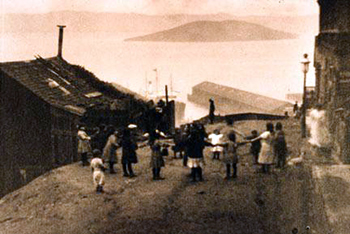




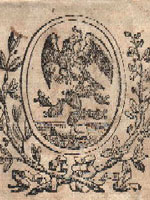
 Wearing breeches and a Union Jack waistcoat, John Bull once served as the symbol for the British everyman, but evolved into a symbol of the country as a whole. Both Britannia, the goddess-like female figure of England, and John Bull often appeared in political cartoons with Uncle Sam or Columbia—another name for Lady Liberty.
Wearing breeches and a Union Jack waistcoat, John Bull once served as the symbol for the British everyman, but evolved into a symbol of the country as a whole. Both Britannia, the goddess-like female figure of England, and John Bull often appeared in political cartoons with Uncle Sam or Columbia—another name for Lady Liberty.  In a spree of imperialism, the United States, represented by Uncle Sam, has "consumed" Hawaii (annexed to the U.S. on July, 1898), as well as Puerto Rico and the Philippines (though the Treaty of Paris and the acquisition of these as territories was still in debate in November 1898). Now, Uncle Sam turns to the figure of Spain—the cartoon's caption has him say, "Now, young man, I'll attend to your case." With the Spanish-American War over, the glutted U.S. prepares to attend to Spain itself, not just its colonies.
In a spree of imperialism, the United States, represented by Uncle Sam, has "consumed" Hawaii (annexed to the U.S. on July, 1898), as well as Puerto Rico and the Philippines (though the Treaty of Paris and the acquisition of these as territories was still in debate in November 1898). Now, Uncle Sam turns to the figure of Spain—the cartoon's caption has him say, "Now, young man, I'll attend to your case." With the Spanish-American War over, the glutted U.S. prepares to attend to Spain itself, not just its colonies. In the years leading up to the Spanish-American War and the U.S. metamorphosis into an imperialist world power, Uncle Sam was often drawn as a police officer. However, cartoonist Thomas Nast had already pictured Uncle Sam as a cop on the beat, policing U.S. political corruption, as early as 1888.
In the years leading up to the Spanish-American War and the U.S. metamorphosis into an imperialist world power, Uncle Sam was often drawn as a police officer. However, cartoonist Thomas Nast had already pictured Uncle Sam as a cop on the beat, policing U.S. political corruption, as early as 1888. For several decades, Uncle Sam was indistinguishable from an earlier character, Brother Jonathan, who also represented the U.S., superceding Yankee Doodle. By the middle of the 19th century, the same figure-by then clad in striped pants, short jacket, and top hat—was sometimes called Uncle Sam and sometimes Brother Jonathan. By about 1875, "Brother Jonathan" had mostly disappeared.
For several decades, Uncle Sam was indistinguishable from an earlier character, Brother Jonathan, who also represented the U.S., superceding Yankee Doodle. By the middle of the 19th century, the same figure-by then clad in striped pants, short jacket, and top hat—was sometimes called Uncle Sam and sometimes Brother Jonathan. By about 1875, "Brother Jonathan" had mostly disappeared. Often depicted in the French Revolution, Libertas wore a soft "liberty" or "Phrygian" cap. As Columbia, she could also wear feathers on her head, a reference to Native Americans, or a star or crown. The name "Columbia" fell out of popularity after World War I, and the character gained the names "Miss Liberty" or "Lady Liberty."
Often depicted in the French Revolution, Libertas wore a soft "liberty" or "Phrygian" cap. As Columbia, she could also wear feathers on her head, a reference to Native Americans, or a star or crown. The name "Columbia" fell out of popularity after World War I, and the character gained the names "Miss Liberty" or "Lady Liberty."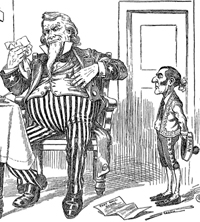

 visible each November, blazed with extraordinary strength. The falling stars caught the attention of people throughout North America, and many Lakota bands chose the shower as the event to stand for the year. Later in the 1800s, ethnologist Garrick Mallery (1831-1894) identified the pictures as standing for the meteor shower, allowing scholars to match the years of the winter counts with the European calendar.
visible each November, blazed with extraordinary strength. The falling stars caught the attention of people throughout North America, and many Lakota bands chose the shower as the event to stand for the year. Later in the 1800s, ethnologist Garrick Mallery (1831-1894) identified the pictures as standing for the meteor shower, allowing scholars to match the years of the winter counts with the European calendar. introduced peg calendars to the Native peoples of Alaska so that they could track the holy days of the Russian Orthodox Church. Russian contact with Alaskan cultures began in the 1700s, and settlement of the region, accompanied by cultural exchange, continued until 1867, when the U.S. purchased Alaska from the Russians. Peg calendars remained in use into the 20th century.
introduced peg calendars to the Native peoples of Alaska so that they could track the holy days of the Russian Orthodox Church. Russian contact with Alaskan cultures began in the 1700s, and settlement of the region, accompanied by cultural exchange, continued until 1867, when the U.S. purchased Alaska from the Russians. Peg calendars remained in use into the 20th century. to record the passing of time in this manner. However, the use of calendar sticks was not limited to the Winnebago. Other Native American groups throughout North America used sticks, including the Pima, the Osage, and the Zuni. The markings on sticks and their daily and ceremonial use varied from region to region and people to people.
to record the passing of time in this manner. However, the use of calendar sticks was not limited to the Winnebago. Other Native American groups throughout North America used sticks, including the Pima, the Osage, and the Zuni. The markings on sticks and their daily and ceremonial use varied from region to region and people to people. one beginning around the summer solstice (June 20th or 21st) and the other with the winter solstice (December 21st or 22nd). After the winter solstice, katsinam, benevolent spirits, visit the Hopi people, personated by Hopi men in masks and costumes. Following the summer solstice, the katsinam leave the Hopi again.
one beginning around the summer solstice (June 20th or 21st) and the other with the winter solstice (December 21st or 22nd). After the winter solstice, katsinam, benevolent spirits, visit the Hopi people, personated by Hopi men in masks and costumes. Following the summer solstice, the katsinam leave the Hopi again. The Smithsonian National Museum of Natural History's online exhibit
The Smithsonian National Museum of Natural History's online exhibit 
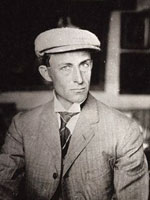






 In 1790, federal marshals collected data for the first census, knocking by hand on each and every door. As directed by the U.S. Constitution, they counted the population based on specific criteria, including "males under 16 years, free White females, all other free persons (by sex and color), and slaves." There was no pre-printed form, however, so marshals submitted their returns, sometimes with additional information, in a variety of formats.
In 1790, federal marshals collected data for the first census, knocking by hand on each and every door. As directed by the U.S. Constitution, they counted the population based on specific criteria, including "males under 16 years, free White females, all other free persons (by sex and color), and slaves." There was no pre-printed form, however, so marshals submitted their returns, sometimes with additional information, in a variety of formats.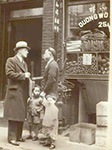
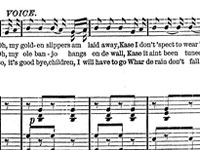
 True. Or at least, he is recorded as doing so in colonist Robert Beverley's 1705 The History and Present State of Virginia, today a major resource in early Virginian and colonial history. Beverley gives a full account of Pocahontas's story (though historians debate its accuracy). According to Beverly, in England,
True. Or at least, he is recorded as doing so in colonist Robert Beverley's 1705 The History and Present State of Virginia, today a major resource in early Virginian and colonial history. Beverley gives a full account of Pocahontas's story (though historians debate its accuracy). According to Beverly, in England, False. Upon coming to the throne in 1891—following the death of her brother, King Kalakaua—Queen Lili'uokalani appointed Victoria Ka'iulani Cleghorn, her half-Scottish half-Hawaiian niece, as Crown Princess of Hawaii. Born in 1875 and educated in the UK, Ka'iulani spent the latter part of her short life advocating for the restoration of her country's independence. She died of illness in 1899, at the age of 23—shortly after the U.S. officially annexed Hawaii. The Hawaiian royal line continues today, but Ka'iulani was the last princess appointed while the monarchy held political power.
False. Upon coming to the throne in 1891—following the death of her brother, King Kalakaua—Queen Lili'uokalani appointed Victoria Ka'iulani Cleghorn, her half-Scottish half-Hawaiian niece, as Crown Princess of Hawaii. Born in 1875 and educated in the UK, Ka'iulani spent the latter part of her short life advocating for the restoration of her country's independence. She died of illness in 1899, at the age of 23—shortly after the U.S. officially annexed Hawaii. The Hawaiian royal line continues today, but Ka'iulani was the last princess appointed while the monarchy held political power.  False. The imperial family objected to the opening of Japan—which had kept its borders largely shut to outsiders for centuries—to the U.S., but the imperial princess' marriage did not take place until several years after the shogun concluded a second treaty, this one with the first U.S. Consul General to Japan, Townsend Harris. The shogunate, essentially a monarchy made up of warrior-rulers, had long held the power of government in Japan, while the traditional monarchy of the imperial family had become largely ceremonial. However, the shogunate's agreeing to open the country to Westerners in the treaties of 1854 and 1858 created a political divide between supporters of the shogun and of the emperor; Kazunomiya's marriage to Iemochi in 1862 was meant to bridge this divide.
False. The imperial family objected to the opening of Japan—which had kept its borders largely shut to outsiders for centuries—to the U.S., but the imperial princess' marriage did not take place until several years after the shogun concluded a second treaty, this one with the first U.S. Consul General to Japan, Townsend Harris. The shogunate, essentially a monarchy made up of warrior-rulers, had long held the power of government in Japan, while the traditional monarchy of the imperial family had become largely ceremonial. However, the shogunate's agreeing to open the country to Westerners in the treaties of 1854 and 1858 created a political divide between supporters of the shogun and of the emperor; Kazunomiya's marriage to Iemochi in 1862 was meant to bridge this divide. To read Robert Beverley's full account of the life of Pocahontas, refer to pages 25-33 of his The History and Present State of Virginia
To read Robert Beverley's full account of the life of Pocahontas, refer to pages 25-33 of his The History and Present State of Virginia 

 [Question 1] The first photograph of either a president or a first lady broadcasting from the White House is of Mrs. Hoover. She began national broadcasts in 1929, even setting up a practice room in the White House where she could "improve [her] talkie technique." Many of her broadcasts were made from President Hoover's country retreat, Camp Rapidan, where she often devoted her programs to speaking to young people, urging girls to contemplate independent careers and boys to help with the housework. Mrs. Hoover had a degree in geology from Stanford University, as did her husband. She had accompanied him to China for two years, where he hadsupervised the country's mining projects. She later used the Mandarin Chinese she learned then to communicate with her husband privately when they were in the presence of others.
[Question 1] The first photograph of either a president or a first lady broadcasting from the White House is of Mrs. Hoover. She began national broadcasts in 1929, even setting up a practice room in the White House where she could "improve [her] talkie technique." Many of her broadcasts were made from President Hoover's country retreat, Camp Rapidan, where she often devoted her programs to speaking to young people, urging girls to contemplate independent careers and boys to help with the housework. Mrs. Hoover had a degree in geology from Stanford University, as did her husband. She had accompanied him to China for two years, where he hadsupervised the country's mining projects. She later used the Mandarin Chinese she learned then to communicate with her husband privately when they were in the presence of others. [Question 4] Julia Grant, although it happened after her husband was no longer president. Mrs. Grant went down the Big Bonanza silver mine in Virginia City, Nevada with her husband after hearing that he had wagered that she would be afraid to go. The Grants, along with their son, Ulysses, Jr., visited the mine on October 28, 1879, more than two years after Grant had left office. The mine's fabulous production of silver during the Civil War had done much to undergird the Government's financial credit internationally. Lucy Hayes later descended into the same mine with her husband, President Rutherford Hayes. On May 21, 1935, Eleanor Roosevelt made the national news by visiting the Willow Grove coal mine in Bellaire, Ohio, to observe the working conditions of the miners.
[Question 4] Julia Grant, although it happened after her husband was no longer president. Mrs. Grant went down the Big Bonanza silver mine in Virginia City, Nevada with her husband after hearing that he had wagered that she would be afraid to go. The Grants, along with their son, Ulysses, Jr., visited the mine on October 28, 1879, more than two years after Grant had left office. The mine's fabulous production of silver during the Civil War had done much to undergird the Government's financial credit internationally. Lucy Hayes later descended into the same mine with her husband, President Rutherford Hayes. On May 21, 1935, Eleanor Roosevelt made the national news by visiting the Willow Grove coal mine in Bellaire, Ohio, to observe the working conditions of the miners. [Question 7] Lyndon Johnson, with his wife Lady Bird on one side and Jackie on the other, was sworn in aboard Air Force One less than two hours after JFK's assassination. The ceremony was delayed to wait for Jackie to arrive. The most famous photograph of the event has Jackie in the foreground, standing in a pink suit still stained with her husband's blood, with LBJ in the center with his hand upraised taking the oath, and with Lady Bird in the background.
[Question 7] Lyndon Johnson, with his wife Lady Bird on one side and Jackie on the other, was sworn in aboard Air Force One less than two hours after JFK's assassination. The ceremony was delayed to wait for Jackie to arrive. The most famous photograph of the event has Jackie in the foreground, standing in a pink suit still stained with her husband's blood, with LBJ in the center with his hand upraised taking the oath, and with Lady Bird in the background.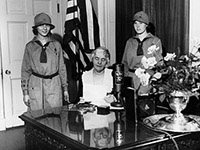

 The University of Georgia's
The University of Georgia's 